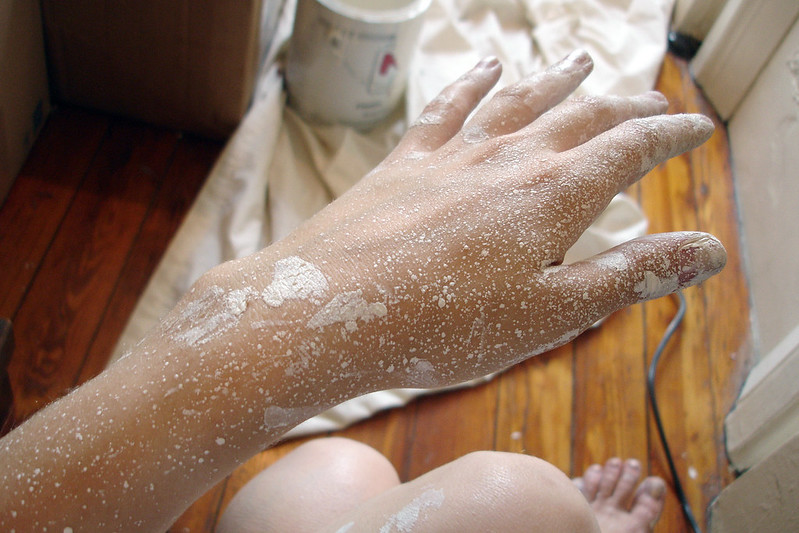You have to know how to fix water damaged drywall with Kilz because it removes the smell and stain of water damage. You can apply Kilz after you cleaned and dried your water-damaged drywall.
This article talks about Kilz and how it helps with water damage, the steps in using it on water-damaged drywall, and if you can use it as a final coat. Lastly, this article tackles water damage and insurance coverage.

What Is Kilz and How Can It Help Water Damage?
Kilz is a stain-blocker and is used to cover stains. It works well with water stains caused by water damage, either by leaks or by floodwater.
Kilz is also a primer and is used as a coat before applying waterproof paint on your water-damaged drywall. This results in a smooth finish.
Moreover, it is also a sealant that can protect your drywall from moisture. It can also be used to fill in sponge-like surfaces and helps your paint adhere to your surface better.
Which Kilz is best for water stains?
For Drywall, you can use Kilz2 Latex because it is perfect for porous surfaces. This Kilz primer would also bring out the color of your paint, and make it look even and smooth.
For stains, you can use Kilz Premium to create a barrier. Therefore, preventing stains from penetrating your paint. This primer stands above others because it completely blocks out even water stains because of their water- and oil-based primer.
If you want an all-purpose primer that seals and blocks stains while also offering excellent adhesion properties and resists mildew, then Kilz 2 All-Purpose Primer is the perfect primer for you. This primer can block minor water stains and can also be used when you want to change the color of your drywall.
If you need to cover major stains and block smoke odors, then try Kilz 3 Premium. As you can see, Kilz takes their primers seriously because they have an available primer for every situation!
Steps In Using Kilz For Water Damaged Drywall
After learning about Kilz, here are the steps you need to know in applying Kilz on water-damaged drywall. Before anything, be sure to fix the water damage from your drywall first before applying Kilz. Otherwise, it would be counterproductive.
Step #1. Prepare
First, prepare the surface where you will apply Kilz. You can prepare the surface by removing dirt, peeling paint, and other debris that will prevent the paint from adhering to the drywall.
Step #2. Sand
Another way of preparing your surface is by sanding it, so sand your drywall. Make sure the entire expanse of your water-damaged drywall is smooth after sanding.
Step #3. Clean
After sanding your surface, dust off the surface and clean it. Scrub the parts where you are going to apply Kilz using a TSP substitute.
After cleaning it, leave the surface to dry. Then protect the surface where you won’t use Kilz with a painter’s tape.
Step #4. Apply
Use a brush or a roller — it depends on the span of your water-damaged area — when you apply Kilz. Apply it evenly and let it dry for at least 30 minutes. If you live in a humid environment, leave it longer.
Step #5. Test patch
Apply a top coat on one area to serve as a test patch. If there is bleeding or if the original surface is prominent, apply another coat of Kilz.
If not, continue applying your topcoat. Let your topcoat dry and apply your waterproof paint.
How many coats of Kilz do you require?
It depends. On average, only one coat is enough. However, if the original surface is persistent and still bleeds through after one coat, then, apply a second one.
Can you use Kilz as a final coat?
No. It is used as a base, as a primer. It is not meant to stand against elements that topcoats usually guard your drywalls with.
For topcoats, you can use the following:
Polyurethane
Polyurethane is commonly used on stained wood and is durable. However, it tends to yellow the paint on furniture after a while.
Velvet Finishes
This product is a topcoat with built-in paint, so it hits two birds with one stone. Velvet Finishes are especially useful for busy surfaces.
Its topcoat, called Protect, is made of polyurethane. However, it is water-based, while the former is oil-based. It is also non-yellowing.
Polycrylic
Polyurethanes are usually oil-based (except for Velvet Finishes Protect), but polycrylic is water-based and is appropriate for both wood and paint.
Is water damage on drywall included in your insurance coverage?
Yes, water damage on your drywall is included in your insurance coverage as long as the damage is sudden. However, you have to say goodbye to claiming your insurance if your water damage has grown mold already. For questions and clarifications, it is ideal if you contact your lawyer.
Conclusion
This article has informed you well on how to fix water damaged drywall with Kilz. You have come to know how excellent a product Kilz is, so we look forward to you opening your homes and using them in your repair or repaint projects!
